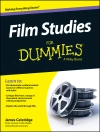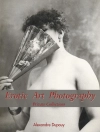In the first chapter, the technical aspects of photography are discussed first. This includes understanding how the image is created by the lens in the first place, the influence of the camera sensor and the ominous crop factor.
The second chapter is then devoted entirely to the topic of ‘correct exposure’. What is a correct exposure anyway? Which parameters play the main roles here? This is about aperture, shutter speed and ISO and their interaction. You will learn why the camera’s lightmeter fails in certain situations and what to do about it.
When you have internalized these first two chapters, you will already have understood how technically correctly exposed images are created, how the camera supports you in this and how you can influence it. Chapters 3 and 4 will then look at the two most important design elements in photography: Depth of field and shutter speed. This will give you the tools you need to take not only technically perfect photos, but also beautiful ones in terms of design, with which you can take part in any competition.
Finally, Chapter 5 rounds off your background knowledge with explanations on the subject of white balance and a comparison as well as a pro and con of the image data formats (RAW vs. JEPG) .
The second part of the book then supports you in practice in the adventure of photography. The three most important ‘camera programs’ are explained and the correct focusing is discussed. Sample images help you to choose the right camera settings according to the desired image result. In this way, you will quickly feel a sense of achievement and make rapid progress in your photographic skills.
Giới thiệu về tác giả
Für den Autor begann das Abenteuer Fotografie im Jahr 2000. Die ersten bezahlbaren Digitalkameras kamen auf den Markt und er war stolz seine erste 2-Mega-Pixel-Kamera in Händen zu halten. Er hatte keinerlei Erfahrung mit dem Fotografieren und so verhielt er sich auch. Er wählte den Bildausschnitt
und drückte ab. Sehr viel mehr konnte er auch nicht machen, vielleicht noch den eingebauten Blitz ein- oder aus schalten. Aber das war´s.
In den Folgejahren boomte der Markt und die Kameratechnik machte rasche Fortschritte. Er nutzte ein Angebot beim Discounter und war von der Auflösung und den Details seiner zweiten Kamera – immerhin 8-Mega-Pixel – begeistert. Damals packte ihn das Virus Fotografie endgültig. Die Einstellmöglichkeiten waren umfangreich, es gab einen 4-fach-Zoom, und er realisierte, dass Fotografieren mehr ist, als bloßes
„Point and Shoot“.
Er begann sich zunehmend für Bücher über das Fotografieren zu interessieren. Und er kaufte Bücher. Viele
Bücher. Dicke Bücher. Schwere Bücher. Teure Bücher. Ja, er hat sehr viel aus diesen Büchern gelernt und sie waren für ihn Inspiration für so manches Foto. Eines aber hat ihn immer gestört und stört ihn noch heute: Sie sind unhandlich und vor allem viel zu umfangreich, um schnellen Fortschritt beim Fotografieren zu machen.
Der Autor ist davon überzeugt, dass man die Grundlagen des Fotografierens erst verstanden haben muss, bevor man sie sich in der Praxis zu Nutze macht. Er möchte, dass der Leser die Grundlagen der digitalen Fotografie rasch versteht und er fokussiert sich daher gezielt auf das Wesentliche und verwendet überwiegend grafische Abbildungen und Beispielfotos. Dadurch konnte er die Erläuterungstexte knapp halten.












